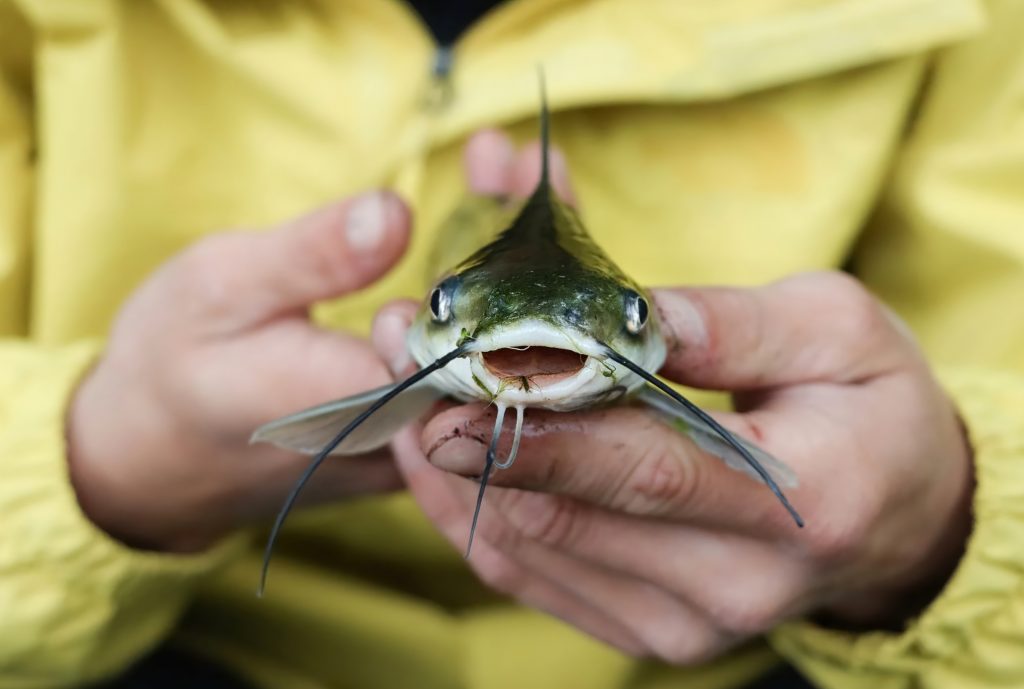Summer is a prime time for catfishing, as warmer waters make these bottom-dwelling fish more active and aggressive. Whether you’re a seasoned angler or a beginner, summer catfishing can be an exciting and rewarding experience. In this article, we’ll discuss the behavior of catfish in the summer, the best locations to catch them, essential gear and equipment, and tips and techniques for catching big catfish in the hottest months.
- Understanding the Behavior of Catfish in the Summer
- Best Locations for Summer Catfishing
- Essential Gear and Equipment for Summer Catfishing
- Tips and Techniques for Catching Big Catfish in the Summer
- Bait Selection for Summer Catfishing
- Fishing Regulations and Ethics for Catching and Releasing Catfish
- Conclusion: Final Tips for Summer Catfishing Success
Understanding the Behavior of Catfish in the Summer
During the summer, catfish are more likely to be found in deeper waters, seeking refuge from the heat and sunlight. They also tend to be more active during low-light periods, such as early morning or late evening. Understanding their feeding habits and preferences is essential to catching them. Catfish are opportunistic feeders and will eat a variety of baits, including live and cut bait, as well as artificial lures.
Best Locations for Summer Catfishing
When looking for the best locations to catch catfish in the summer, it’s essential to consider factors such as water temperature, depth, and structure. Look for areas with deep holes, submerged logs, and rocky outcroppings. Catfish tend to congregate around these areas, using them as shelter and foraging spots. If you’re fishing in a river, pay attention to current breaks and eddies, as these areas can be hotspots for catfish.
Essential Gear and Equipment for Summer Catfishing
Having the right gear and equipment is crucial to successful summer catfishing. You’ll need a sturdy fishing rod and reel, a variety of hooks, sinkers, and swivels, and a landing net to safely handle your catch. It’s also essential to have a good quality fish finder to locate catfish in deeper waters. In addition, wearing polarized sunglasses can help you see through the water surface and spot catfish lurking beneath.
Tips and Techniques for Catching Big Catfish in the Summer
When targeting big catfish in the summer, it’s important to use the right techniques and bait. One effective technique is to use a slip sinker rig, which allows your bait to move freely in the water and attracts more bites. You can also use a Carolina rig or a jig to target catfish. As for bait, fresh cut bait, such as shad or herring, is a popular choice. You can also use live bait, such as worms or minnows, or try using stink baits or dough baits.
Bait Selection for Summer Catfishing
When it comes to summer catfishing, selecting the right bait can be the difference between a successful day on the water and a frustrating one. In general, catfish are known to be opportunistic feeders and will eat a variety of baits. However, there are certain types of bait that are more effective for catching catfish during the summer months.
One of the most popular types of catfish bait is live bait. This can include everything from worms and minnows to shad and bluegill. Live bait is effective because it produces a natural scent and movement that can attract catfish. It’s important to keep live bait fresh and lively by storing it properly and changing it often.
Another effective type of bait for summer catfishing is stink bait. Stink bait is a pungent, dough-like substance that is designed to release a strong scent that can attract catfish from long distances. Stink bait is best used in shallow waters where catfish are known to feed on the bottom. It’s important to use gloves when handling stink bait, as the scent can be difficult to remove from your skin.
Cut bait is also a popular option for catfishing. This type of bait involves cutting up pieces of fish, such as shad or herring, and using them as bait. Cut bait works well in deeper waters and can be especially effective for catching larger catfish. It’s important to keep cut bait fresh and to use a sharp hook to prevent the bait from falling off.
Fishing Regulations and Ethics for Catching and Releasing Catfish
Before heading out for a summer catfishing trip, it’s important to review the local fishing regulations and ethical guidelines for catching and releasing catfish. Always follow catch limits and size restrictions, and handle your catch with care to ensure their safe release back into the water. Remember, catfish are an essential part of the ecosystem, and responsible fishing practices are crucial to maintaining healthy populations.
Conclusion: Final Tips for Summer Catfishing Success
With the right gear, techniques, and knowledge, summer catfishing can be an incredibly rewarding experience. Here are a few final tips for success:
- Keep an eye on water temperatures and weather patterns. Catfish are more active in cooler water and may be less active during hot spells.
- Try fishing at night or early in the morning when temperatures are cooler.
- Experiment with different baits and presentations until you find what works best for you.
- When handling catfish, use gloves or a towel to avoid getting stung by their spines.
- Practice catch and release whenever possible to help preserve catfish populations for future generations.
- And most importantly, have fun and enjoy your time on the water!
With these tips and techniques, you’ll be well on your way to catching big catfish all summer long. Happy fishing!

